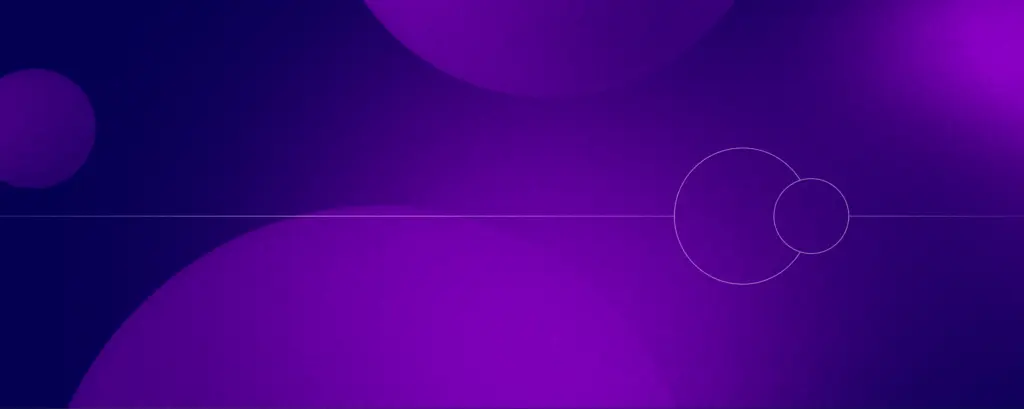May 31st, 2024 | by Magdalena Bałut
Risk Assessment and Mitigation in Modernization Projects

Table of contents
Risk management is the cornerstone of successful modernization projects, ensuring a seamless transition from outdated systems to cutting-edge, efficient technologies. In these transformative endeavors, the primary goal of risk management is to identify, assess, and mitigate any risks that could potentially derail the project’s budget, schedule, quality, and ultimate success. This proactive approach is essential for navigating the complexities of modernization, ensuring projects are delivered on time, within budget, and to the highest standards.
The risk management process follows a continuous cycle of identifying risks, assessing their potential impact, implementing mitigation strategies, monitoring progress, and communicating effectively with stakeholders. This cyclical process ensures that risks are managed dynamically and efficiently throughout the project lifecycle.
In modernization projects, risks can emerge from numerous sources: technological integration challenges, data migration issues, performance issues, stakeholder misalignment, unforeseen technical debt, and resistance to change, to name a few. Effective risk management requires a comprehensive and proactive approach that not only addresses these immediate risks but also anticipates future challenges.
Risk Assessment and Prioritization
Once risks are identified, the crucial next steps involve assessing and prioritizing them based on their potential impact on the project and their likelihood of occurrence. This stage is essential for focusing efforts on the most significant risks. Tools like the Risk Register or Risk Assessment Matrix are invaluable during this phase, aiding project managers in categorizing risks efficiently and directing resources to where they are most needed.
Best Practice: Utilize the Risk Register to systematically gather, assess, and prioritize risks, evaluating them based on their likelihood of occurrence and potential impact on the project. It is critical to treat the Risk Register as a dynamic document that requires regular updates and reviews.
Example: In a project aimed at modernizing an outdated banking application, significant risks identified included cost overruns and scope creep, both assessed as highly likely and impactful. By employing a Risk Matrix, these risks were promptly prioritized for immediate action.
Mitigation: The project manager implemented stringent change control procedures and instituted regular budget reviews. These proactive measures were designed to manage risks effectively, ensuring that the project remained on track and within budget, thus safeguarding the project’s objectives and deliverables.
Communication and Stakeholder Engagement
Effective communication is pivotal in managing the perceptions and expectations of all stakeholders involved in a modernization project. Regular updates, transparent discussions about risks and challenges, and deep stakeholder involvement in key decision-making processes are fundamental in building trust and aligning the project with the organization’s strategic goals. Responsiveness and keeping everyone on the same page are crucial for the success of such initiatives. Ensuring that all stakeholders are informed and engaged can prevent misunderstandings, mitigate risks, and foster a collaborative environment.
Best Practice: It is crucial to maintain open and consistent communication with all stakeholders by ensuring continuous updates and active involvement in the decision-making process. A communication plan should be established during the project planning phase. This plan should detail the types and frequency of meetings, and it should mandate the preparation and distribution of weekly status reports that collate and summarize all pertinent issues and risks associated with the project. Responsive communication helps address concerns promptly and adapt strategies as needed, which is essential for keeping the project on track and stakeholders aligned.
Example: In a platform upgrade project, regular status meetings were convened with stakeholders to discuss the project’s progress, identify any risks observed during the monitoring phase, and strategize on mitigation approaches. These meetings were supplemented with detailed weekly status reports and ad-hoc updates as new information or issues arose. By doing so, all stakeholders were kept informed and could provide timely input, ensuring that any concerns were addressed quickly and collaboratively.
How to ensure transparency and responsiveness – key insights:
Establish Clear Communication Channels
Define who communicates with whom and through which channels. This prevents information silos and ensures that everyone receives the same information.
Regular and Structured Updates
Use consistent formats for updates, such as dashboards or status reports, so that stakeholders know where to find the information they need and how to interpret it.
Active Listening
Engage stakeholders by actively listening to their concerns and feedback. This not only builds trust but also provides valuable insights that can improve project outcomes.
Flexibility in Communication Methods
While structured communication is important, be flexible enough to adapt to the needs and preferences of different stakeholders. This might include face-to-face meetings, video conferences, emails, or collaborative tools.
Documentation and Transparency
Document all decisions, changes, and updates thoroughly. Transparency in documentation helps in tracking progress and provides a clear record for accountability.
Inclusive Decision-Making
Involve key stakeholders in significant decisions to ensure their perspectives are considered. This inclusivity can lead to more robust and widely supported solutions.
Understanding the Modernization Risk Landscape
Modernization projects typically involve the task of replacing or upgrading highly integrated systems with newer, more advanced technologies. This complexity often introduces a slew of risks ranging from technical hurdles and data migration challenges to stakeholder resistance and budgetary overruns. To effectively navigate this landscape, it’s crucial to undertake a comprehensive identification of potential risks right at the project’s outset.
Best Practice: Begin with risk identification activities as soon as the project kicks off. This should involve conducting stakeholder interviews, performing technical assessments, and undertaking industry benchmarking to ensure all potential risks are anticipated.
Example: For a complex data migration project, the project team organized workshops with both the client’s tech teams and stakeholders. These sessions were aimed at pinpointing risks associated with system integration, data migration, and user acceptance.
Mitigation: Leveraging the insights gained from these discussions, the team crafted a phased implementation strategy. This strategy included conducting preliminary integration tests designed to uncover any potential issues early in the process, allowing for timely interventions and adjustments. This proactive approach not only streamlined the migration process but also minimized disruptions, ensuring a smoother transition and higher stakeholder satisfaction.
Mitigation Strategies
Developing effective mitigation strategies is at the heart of risk management. For modernization projects, this could involve:
Technical Prototyping
One of the most effective strategies is the creation of prototypes or proofs of concept. This approach allows teams to validate technical solutions early in the project lifecycle, significantly reducing uncertainty and refining system requirements before full-scale implementation.
Incremental Implementation
Adopting a phased approach to project rollout can dramatically minimize disruptions. By dividing the project into smaller, manageable segments, the team can focus on achieving incremental gains, which allows for ongoing assessment and adjustment. This iterative process not only mitigates risk but also enhances overall project agility.
Training and Support
To ensure a smooth transition and foster user adoption, comprehensive training and robust support structures are crucial. Educating users and stakeholders about the new systems increases their confidence and support, which is essential for the successful implementation of modern technologies.
Vendor Partnerships
Collaborating with technology vendors and consultants brings specialized expertise to the project. These partnerships provide essential support for complex aspects of modernization efforts, from software customization to hardware integration, thereby reducing the risk associated with technical implementations.
Contingency Planning
No modernization project is without its risks, which makes contingency planning vital. By setting aside resources and having flexible strategies ready to address potential failures or delays, project managers can ensure that such issues do not derail the entire project. This proactive approach not only secures the project timeline but also safeguards the investment.
Conclusion
Risk management is not merely a procedural obligation in modernization projects but a strategic imperative that underpins every phase from inception to delivery. Effective risk management ensures not only the smooth transition from outdated to state-of-the-art systems but also safeguards the project against potential pitfalls, guaranteeing that it meets its timelines, budget, and quality standards. By rigorously identifying, assessing, and mitigating risks, project managers can steer complex modernization initiatives to success, delivering substantial value to stakeholders and enhancing organizational capabilities.


